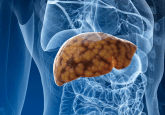Measuring protein structure modifications in complex structures

Researchers have come up with a new technique for quantitatively measuring structurally modified proteins in biological structures.
The team, led by Paola Picotti, a professor of protein network biology, has achieved this by combining an older technique with a current proteome research method. The new method has the potential to identify and measure key protein modifications, which may be responsible for Parkinson’s disease.
Protein modifications arise when a protein folds incorrectly, takes on a different form and consequently will not perform its correct function. It is important to gain an understanding of this as misfolded proteins can congregate into amyloids that may damage cells and are also linked to diseases such as Alzheimer’s, Parkinson’s or cystic fibrosis. “The number of amyloidoses, i.e. diseases that develop due to changes in protein structures, increases every year,” explained Picotti.
Whilst there are techniques including x-ray crystallography and NMR spectroscopy to study the modified proteins, they are not capable of analyzing complex biological structures. This new method also allows a far more thorough study of proteins within a biological sample, as compared to previous methods in which scientists would have to specifically mark just a few proteins in a sample for observation.
Additionally, in this technique the modified proteins are measurable without cleaning or enriching the sample and as part of the complex mixture in which they are found in the cell.
“We can use the method to analyze structural changes of specific proteins or entire protein networks in a targeted fashion and measure numerous proteins at the same time,” said Picotti.
The first stage involves cutting the proteins up into peptides using traditional digestive enzymes such as proteinase K for analysis using selected reaction monitoring; a technique Picotti co-developed as a postdoc. Selected reaction monitoring measures the specific fragments and their quantities to determine the proteins that were originally present.
The distinct feature of this method is that the digestive enzymes create diverse peptide fragments by cutting the same kind of proteins with different structures in different places. These can then be assigned to determine the original protein structures.
At present, the team is using the method to test samples of blood or CSF and measure the amount of non-pathogenic and pathogenic (modified) alpha-synuclein proteins that are present. “It shows us which parts of the protein change and turn into the new pathological structure,” described Picotti. In its modified structure, this protein congregates into amyloid fibrils thought to affect neuronal cells and cause Parkinson’s disease.
Measuring concentrations of the protein is not a viable biomarker for Parkinson’s as they are too similar in healthy people and sufferers; however, knowing both structures of the protein could help in establishing a different biomarker in the future.
Source: Feng Y, De Franceschi G, Kahraman A et al. Global analysis of protein structural changes in complex proteomes. Nat. Biotechnol. doi:10.1038/nbt.2999 (2014) (Epub ahead of print).




